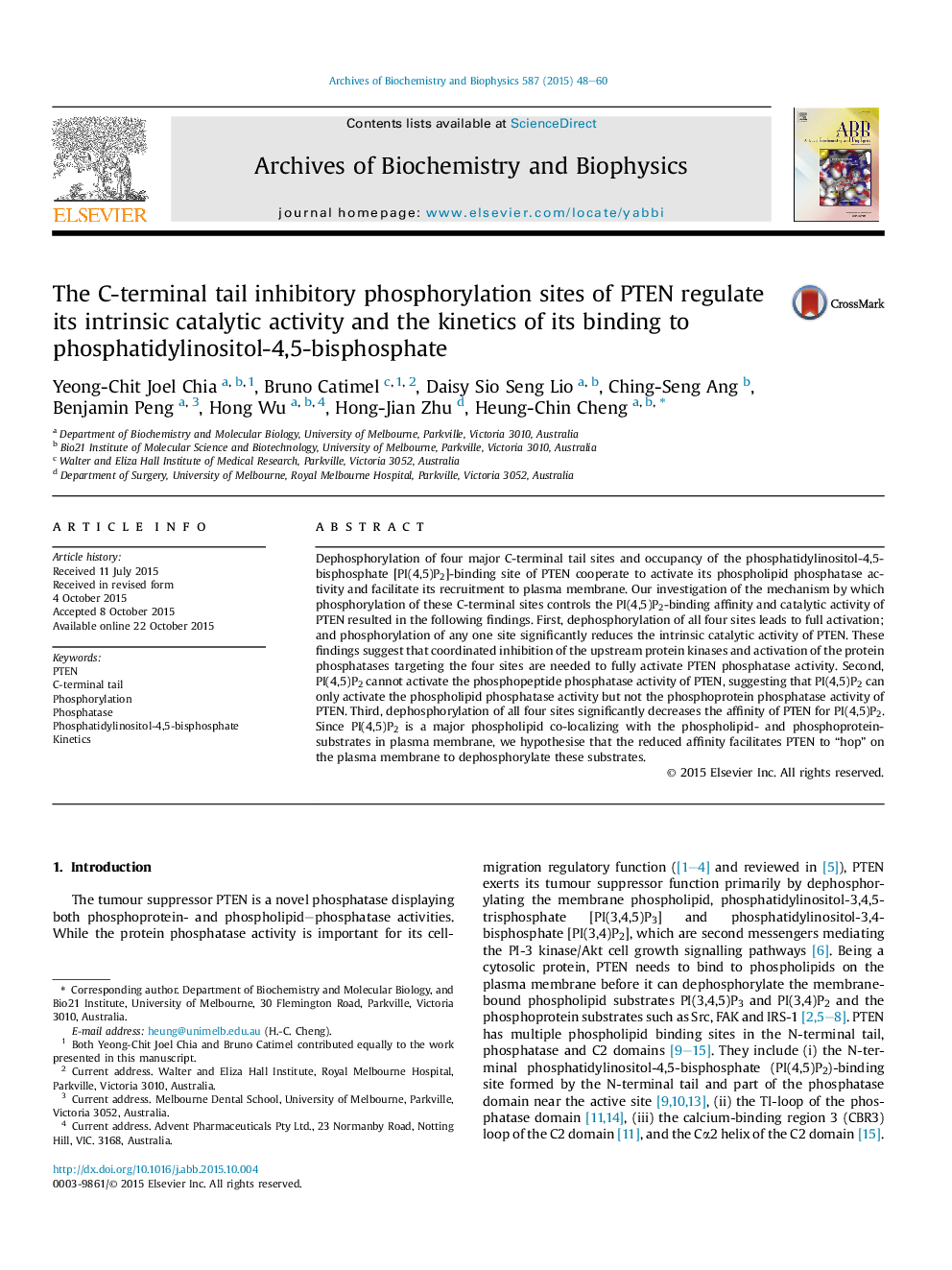| Article ID | Journal | Published Year | Pages | File Type |
|---|---|---|---|---|
| 1924856 | Archives of Biochemistry and Biophysics | 2015 | 13 Pages |
•C-terminal tail phosphorylation inhibits the intrinsic catalytic activity of PTEN.•Dephosphorylation of all four sites is required for full activation of PTEN.•Phospholipid PI-4,5-P2 does not activate the intrinsic catalytic activity of PTEN.•Dephosphorylation of all four sites reduces the PTEN affinity to PI-4,5-P2.
Dephosphorylation of four major C-terminal tail sites and occupancy of the phosphatidylinositol-4,5-bisphosphate [PI(4,5)P2]-binding site of PTEN cooperate to activate its phospholipid phosphatase activity and facilitate its recruitment to plasma membrane. Our investigation of the mechanism by which phosphorylation of these C-terminal sites controls the PI(4,5)P2-binding affinity and catalytic activity of PTEN resulted in the following findings. First, dephosphorylation of all four sites leads to full activation; and phosphorylation of any one site significantly reduces the intrinsic catalytic activity of PTEN. These findings suggest that coordinated inhibition of the upstream protein kinases and activation of the protein phosphatases targeting the four sites are needed to fully activate PTEN phosphatase activity. Second, PI(4,5)P2 cannot activate the phosphopeptide phosphatase activity of PTEN, suggesting that PI(4,5)P2 can only activate the phospholipid phosphatase activity but not the phosphoprotein phosphatase activity of PTEN. Third, dephosphorylation of all four sites significantly decreases the affinity of PTEN for PI(4,5)P2. Since PI(4,5)P2 is a major phospholipid co-localizing with the phospholipid- and phosphoprotein-substrates in plasma membrane, we hypothesise that the reduced affinity facilitates PTEN to “hop” on the plasma membrane to dephosphorylate these substrates.
